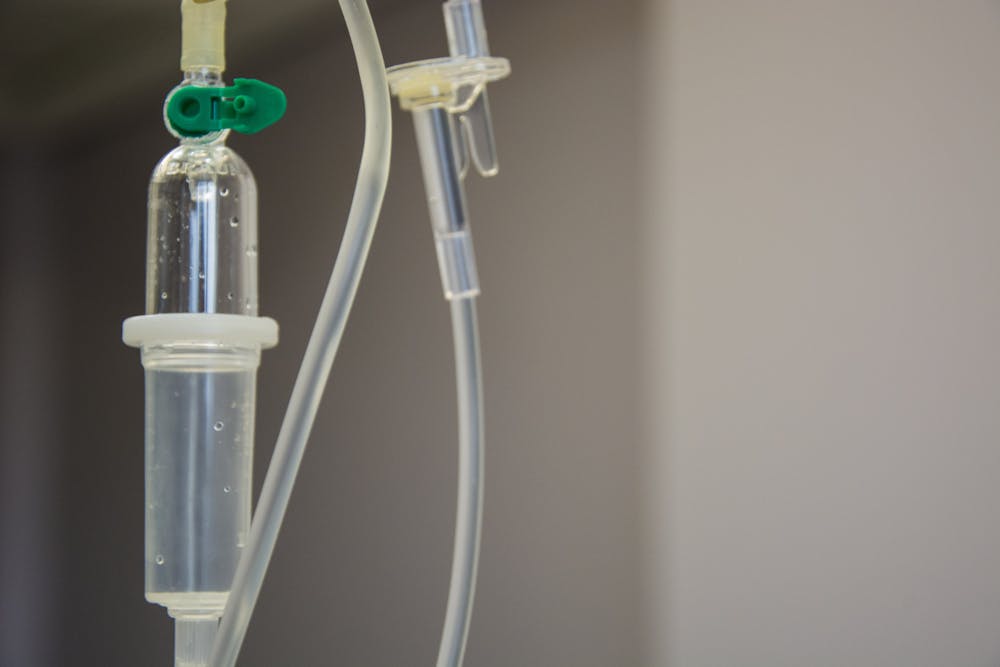Ben Bigelow, a fourth-year medical student, is part of a crew of health-care workers bringing coronavirus (COVID-19) testing to the community. He and his team began noticing a worrying trend at nursing homes — patients on dialysis in nursing homes contracted COVID-19 at higher rates. This highlighted the need to examine how the virus could be spreading in care facilities and how that transmission chain could be eliminated.
In an interview with The News-Letter, Bigelow explained that there were several aspects of dialysis treatment that could expose patients to the disease.
“There’s so much involved in moving a patient to a dialysis center and taking care of them there that it might be its own vector for disease transmission,” Bigelow said.
Bigelow was the lead author of a paper analyzing dialysis center risks published mid-August in the Morbidity and Mortality Weekly Report by the Center for Disease Control and Prevention. The paper centered on “Facility A,” an unnamed nursing home that had an outbreak of COVID-19 in April. The facility had an on-site but independently operated hemodialysis center.
The report analyzed transmission risks at the center and nursing home, as well as the results of testing conducted on nearly all the residents and health-care workers there. At the time of the outbreak, the facility held about 170 residents, 32 of whom needed dialysis at the on-site center.
Staff members were screened for symptoms before their shifts, community dialysis patients were screened before their appointments and residents of the nursing home were screened every eight hours. Patients from the nursing home were scheduled at the same time as patients from the community and patients stayed in a waiting room until their appointments.
While all patients were strongly encouraged to wear masks throughout their appointment, some of them found it difficult to keep the mask on the whole time. Additionally, dialysis machines could not always be spaced six feet apart due to limited space.
Unfortunately, the problems in this on-site dialysis center are common among other centers. Bigelow explained that there were several other dialysis centers with similar issues his research team considered including in the report. They narrowed it down to Facility A to provide a closer, case-study look at the virus transmission chain.
“We actually had multiple facilities that we initially included in the paper, but we narrowed it down to one facility because we thought it was better to present one facility in great detail as opposed to multiple facilities in lesser detail,” Bigelow said.
After two weeks, the results were in for Facility A. Fifteen of the 32 patients that needed dialysis tested positive while only 22 of the other 138 residents did. That’s 47 percent of dialysis patients compared to only 16 percent of the other residents.
Nursing home patients are already at greater risk for contracting COVID-19 — these patients often have close contact with multiple caretakers.
Additionally, many of the patients at nursing homes are immunocompromised or have medical conditions that put them at greater risk for the virus. This is especially true for patients who need dialysis. Conditions like diabetes, high blood pressure and heart disease often make them more vulnerable to COVID-19.
Bigelow explained that bringing together people from several different groups and risk levels increases the chances of infection.
“In general, there’s always a mixing of people. You have people that are coming from nursing homes. You have people coming from the community. There’s always the risk one group could give it to the other,” Bigelow said.
Other risks include waiting rooms, transport between nursing homes to dialysis centers and rooming (patients often share rooms in nursing homes).
The study had limitations; some of the asymptomatic staff at Facility A could not be tested. Additionally, adherence to infection control and prevention practices in the dialysis center was not examined. Finally, the risk of patients leaving for other medical appointments aside from dialysis was not measured.
Despite these limitations, Bigelow explained this report could push dialysis centers to establish stronger measures to reduce the risk of an outbreak.
“We reached out and started working with some of the largest dialysis centers out there to try to create new protocols, try to offer insight we’ve gained. Once we have the best working model, we can roll it out across multiple facilities,” Bigelow said.
Regardless of any new procedures, hand hygiene, mask wearing, social distancing and symptom monitoring will remain foundational to stave off future outbreaks.





